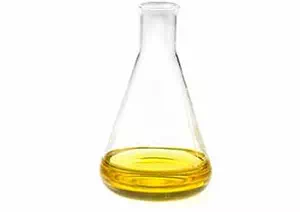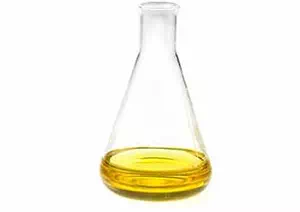All Categories


Cardanol CAS 37330-39-5, Cardanol, CAS 37330-39-5
Cashew phenol (CAS 37330-39-5), as a renewable bio-based phenol, with its unique structure of rigid benzene ring and flexible long chain, is irreplaceable in high-end materials (resins, coatings), green surfactants and biomedicine fields.
CAS : 37330-39-5
Formula : C21H34O
| CAS | 37330-39-5 |
| Molecular formula | C21H34O |
| Molecular weight | |
| EIENCS | |
| Form | Oil |
| Melting point | 154-157 °C |
| boling point | 225 °C |
| Density | / |
| Solubility | Benzene (Slightly), Chloroform (Slightly), Ethanol (Sparingly) |
| PKA | / |
| Color | Light Beige to Light Brown |
| Storage temp | Amber Vial, Refrigerator, Under inert atmosphere |
Cashew phenol (CAS 37330-39-5), as a renewable bio-based phenol, with its unique structure of rigid benzene ring and flexible long chain, is irreplaceable in high-end materials (resins, coatings), green surfactants and biomedicine fields:
Performance advantages: High-temperature resistance, hydrophobicity, self-drying, superior to petroleum-based phenol;
Environmental protection value: The raw materials are renewable and have a fast degradation rate.
Application potential: The wound healing function in the medical field awaits in-depth development.
1. Resin and Coatings Industry (Core Applications)
Epoxy resin curing agent: Replace 30% phenol, enhance toughness, water resistance and electrical insulation.
Phenolic resin modification: used in high-temperature resistant friction materials such as rocket components and high-speed rail brake pads.
Coating additives: Enhance anti-corrosion and self-drying properties, suitable for Marine and industrial protective paints.
2. Surfactants
Cashew phenol polyoxyethylene ether: It can replace nonylphenol and is used as a crude oil demulsifier and low-foaming cleaner. It is biodegradable quickly and has low skin irritation.
3. Biological activity and pharmaceutical potential
Promoting wound healing: A concentration of 1 μg/mL can accelerate the migration of human keratinocytes (HaCaT), with a closure rate of up to 99%.
Regulating fatty acids: Increase polyunsaturated fatty acids such as ω-3/6/9 (PUFA), which have antioxidant potential.
4. Other fields
Rubber/plastic: Antioxidant, enhancing heat resistance and mechanical strength.
Ink/Adhesive: Pigment dispersant, improving printability.
Health risk:
High concentration (>10 μg/mL) can cause DNA damage (comet experiment);
Irritating to the skin/eyes (Protective equipment should be worn during operation).
Environmental friendliness: Its biodegradability is superior to that of petroleum-based phenols, in line with the trend of green chemical engineering.
Regulation: China's "Cashew Phenol Industry Standard" (implemented in June 2025) regulates quality indicators.
* Prompt reply and 24 hours online, professional team to provide best price and high quality product.
* Sample testing support.
* Every batch of products will be tested to ensureits quality.
*The packing also can be according the customers` requirment.
*Any inquiries will be replied within 24 hours.
*we provide Commerical Invoice, Packing List, Bill of loading, COA , Health certificate and Origin certificate. If your markets have any special requirements, let us know.